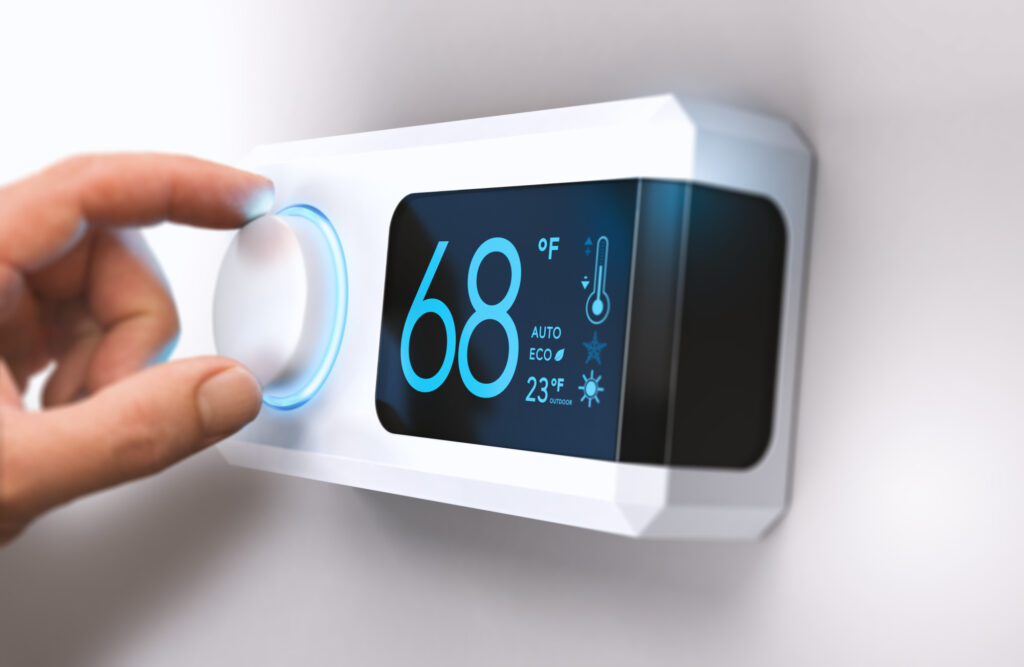Reducing your carbon footprint might seem like an expensive and complicated task. Even if you bike to work and recycle everything, your home is still a huge source of energy consumption.
This guide will show you how to make a house more energy efficient in six easy steps. Using less energy doesn’t mean you have to remodel your whole house. A few adjustments can go a long way towards lowering your environmental impact.
1. Do an Energy Audit
The first step to making your home more energy efficient is finding out how much energy you’re using. Once you know what parts of your home are using the most energy, you can focus on those areas.
There are a lot of ways your home uses energy. Knowing how your home uses energy will keep you from making expensive changes that won’t impact your energy efficiency.
You don’t need to buy a fancy monitor or pay anyone to do an audit. The Department of Energy has an estimator tool that you can use. It will help you figure out both your energy use and what it costs you in utility bills.
2. Replace Inefficient Appliances
Older appliances are going to be less energy efficient than newer models. It’s better for the environment to use the appliances you have if they are still functional.
You can make functional older appliances more efficient with easy modifications. Use cold water with your washing machine, and hang clothes to dry when possible. Only run your dishwasher when it’s full, and adjust the temperature of your refrigerator to avoid unnecessary cooling.
However, when it’s time to replace these appliances, look for models marked with an Energy Star label. Energy Star appliances are the most energy-efficient versions of each appliance.
3. Smart Plugs and LED Bulbs
One of the best ways to make a house more energy efficient is to turn off lights and electronics when you aren’t using them. However, many items are “energy vampires” or produce “phantom load.” These terms refer to items that use energy even when they aren’t on or in use.
Smart plugs are a good way to control these power drains. A smart plug can shut off power to the lamps, TVs, and other smaller appliances that don’t need to be on standby.
Smart LED bulbs are a similarly good choice. LED bulbs are more efficient than incandescent and CFL bulbs already. A smart bulb or switch will increase that efficiency. You can put your lights on a timer so that they’ll turn off even if you forget to do it manually.
4. Insulate Windows and Doors
A huge source of energy drain for a lot of homes is the doors and windows. When cold air leaks out in the summer, or warm air in the winter, your HVAC system has to work harder to keep your home comfortable. The harder that system works, the more energy it uses. Easy ways to make a house more energy efficient include sealing your windows and doors.
Draft blockers on the bottoms of any doors that lead outside can help seal the air in. Caulking around your windows to seal out drafts there will also help. If you can afford it, replacing windows with energy-efficient double or triple glazed windows from Bristol double glazing can increase your insulation.
The types of window treatments you use can also help. In the summer, letting a lot of sunlight in will help warm your home. Thick curtains that block and absorb the heat, like blackout curtains, can keep your home cooler in the summer.
Adjusting your curtains throughout the days and the seasons may seem silly, but it’s a simple step that can improve your home’s insulation. In modern, energy-efficient house design, the houses are built strategically to take advantage of the sun. You can get the same advantages in an older home with curtain adjustments.
5. Adjust Your Thermostat
The heating and cooling system is a large energy consumer in most homes. Increasing your home’s insulation is a great first step in lowering how much you use these systems. Making an adjustment of a few degrees can dramatically lower your energy consumption.
Keeping your HVAC filters clean and the system in good repair will also keep it running at maximum efficiency. Doing a maintenance check and deep clean at the start of each season will keep your energy use down.
Also, consider using ceiling fans to reduce your HVAC use. In the summer, they can provide a cooling breeze. In the winter, reversing the fan blades’ direction will help push warm air down into the room.
6. Choose Clean Energy
It’s impossible to live these days without using some kind of energy. Choosing clean, renewable energy for the power you do use will help lower your environmental impact.
Many states let you choose your own energy provider. This allows you to choose clean, renewable energy sources like solar and wind. It doesn’t have to ruin your budget, either. You can compare rates from various companies and find the best eco-friendly plan for you and your budget.
If your local utility companies don’t offer renewable energy, consider installing solar panels. Even just a few panels on your roof can reduce your carbon footprint–and your electricity bill!
Now You Know How to Make a House More Energy Efficient
Now that you know how to make a house more energy-efficient, you can start making positive changes. Being more energy efficient doesn’t have to be difficult or expensive. Check out our other home and lifestyle guides for more tips on environmentally friendly and sustainable home design.

